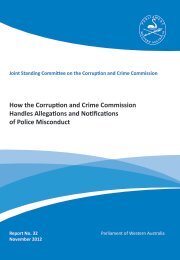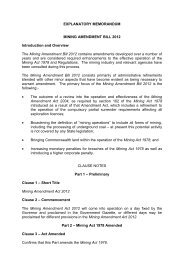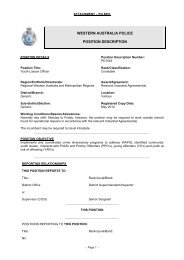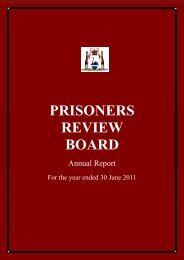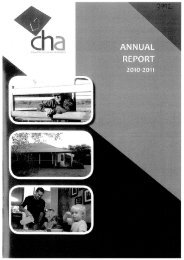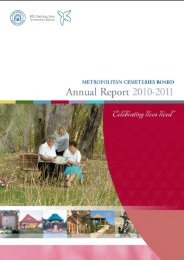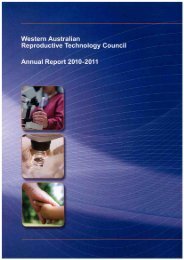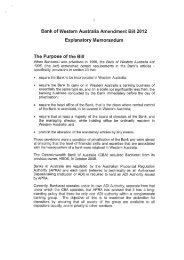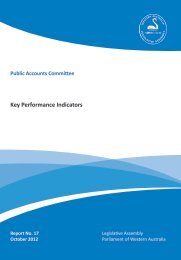Port Hedland Port Authority Annual Report 2011 - Parliament of ...
Port Hedland Port Authority Annual Report 2011 - Parliament of ...
Port Hedland Port Authority Annual Report 2011 - Parliament of ...
Create successful ePaper yourself
Turn your PDF publications into a flip-book with our unique Google optimized e-Paper software.
Note 2. Summary <strong>of</strong> Significant Accounting Policies<br />
The accounting policies set out below have been applied consistently to all periods presented in these<br />
financial statements unless otherwise stated.<br />
Certain comparative amounts have been reclassified to conform with the current year’s presentation<br />
(see note 1(b)).<br />
(a)<br />
Revenue recognition<br />
Revenue from ordinary activities is net <strong>of</strong> returns and taxes, for services to entities outside the<br />
<strong>Authority</strong> and is recognised as revenue when the services have been provided. Lease revenue,<br />
derived from the lease <strong>of</strong> vacant land and buildings is recognised in income a straight line basis<br />
over the lease term. Other Revenue and Interest Revenue which includes interest on short term<br />
investments, is recognised when earned.<br />
(b)<br />
Income tax<br />
The <strong>Authority</strong> operates within the national tax equivalent regime (“NTER”) whereby an equivalent<br />
amount in respect <strong>of</strong> income tax is payable to the State Government. The calculation <strong>of</strong> the<br />
liability in respect <strong>of</strong> income tax is governed by NTER guidelines and directions approved by<br />
Government.<br />
As a consequence <strong>of</strong> participation in the NTER, the <strong>Authority</strong> is required to comply with AASB 112<br />
Income Taxes.<br />
Income tax expense comprises current and deferred tax. Income tax expense is recognised in<br />
pr<strong>of</strong>it or loss except to the extent that it relates to items recognised directly in equity, in which<br />
case it is recognised in equity.<br />
Current tax is the expected tax payable on the taxable income for the year, using tax rates<br />
enacted or substantively enacted at the reporting date, and any adjustment to tax payable in<br />
respect <strong>of</strong> previous years.<br />
Deferred tax is recognised on temporary differences between the carrying amounts <strong>of</strong> assets and<br />
liabilities in the financial statements and the corresponding tax bases used in the computation <strong>of</strong><br />
taxable pr<strong>of</strong>it. Deferred tax is not recognised on the initial recognition <strong>of</strong> assets or liabilities in a<br />
transaction that is not a business combination and that affects neither accounting, nor taxable<br />
pr<strong>of</strong>it or loss. Deferred tax is measured at the tax rates that are expected to be applied to the<br />
temporary differences when they reverse, based on the laws that have been enacted or<br />
substantively enacted by the reporting date.<br />
A deferred tax asset is recognised to the extent that it is probable that future taxable pr<strong>of</strong>its will<br />
be available against which the temporary difference can be utilised. Deferred tax assets are<br />
reviewed at each reporting date and are reduced to the extent that it is no longer probable that<br />
the related tax benefit will be realised.<br />
(c)<br />
Receivables<br />
Trade debtors are recognised and carried at the original invoice amounts less an allowance for<br />
any uncollectible amounts. Debtors are generally settled within 30 days except for property<br />
rentals, which are governed by individual lease agreements.<br />
Page 58



